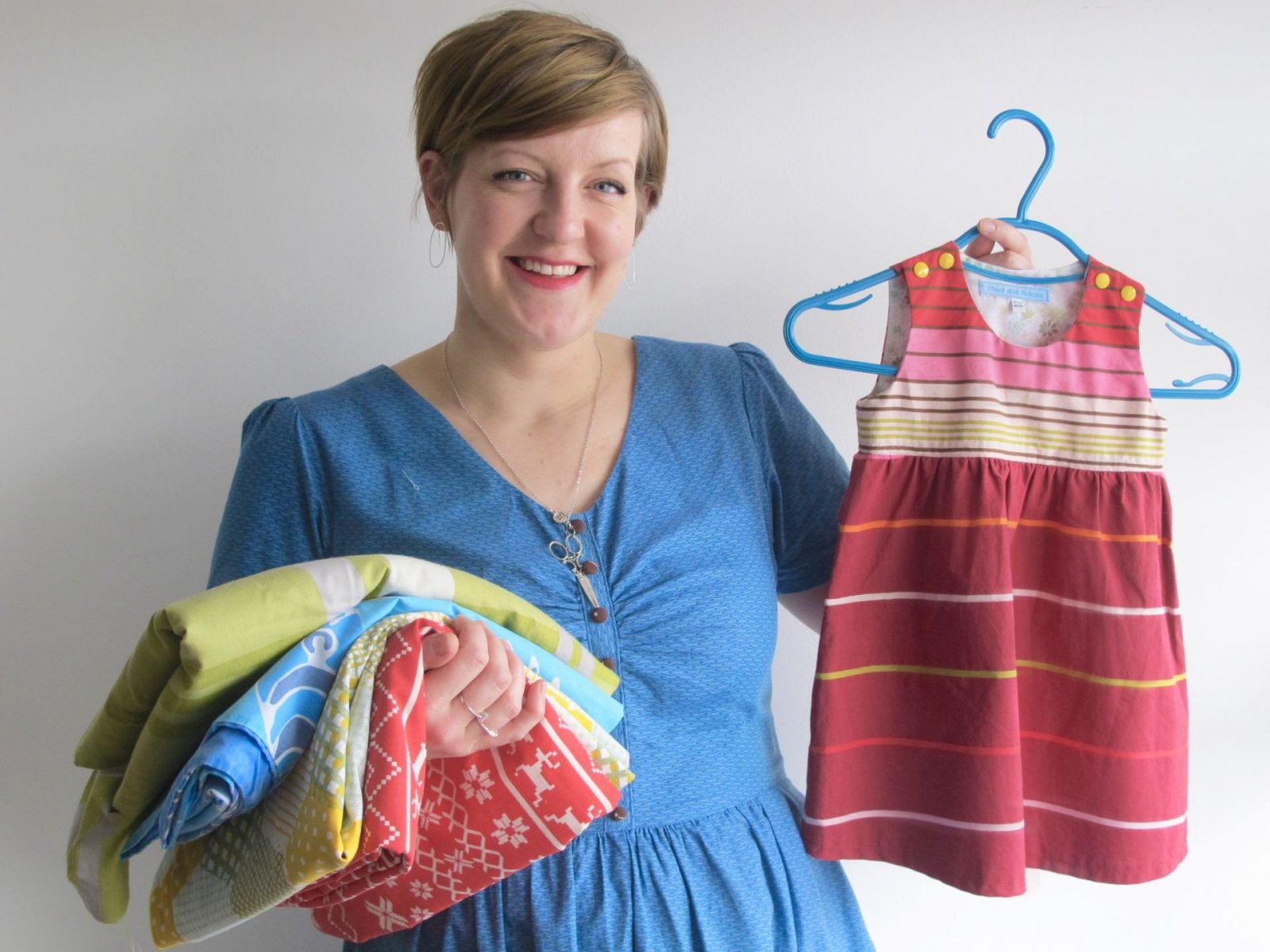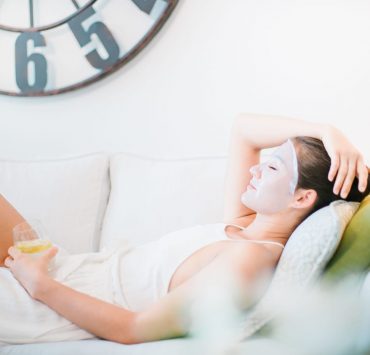
1. Can you explain what up-cycled means?
Up-cycling is when old, worn out, or otherwise unwanted is taken apart and transformed into something new and different. I use old duvet covers and curtains that are unwanted and sometimes very worn at the seams, and turn them into cute clothes for kids. We live in such a throw-away culture, that I think sometimes the potential of old things gets overlooked. With a bit of creativity, so many things can be taken apart and re-made. Basically, the idea is that just because something isn’t useful anymore doesn’t mean that what it’s made of isn’t valuable. The sustainable benefits are two-fold with up-cycling: less waste and less consumption. By using already existing fabrics through up-cycling, I’m not only saving the original duvet cover or curtain from the landfill; I’m also not consuming any new materials, which use up energy and resources and eventually create more waste.
2. Between thrift store clothing and up-cycled clothing, what are the key benefits of up-cycled?
This is such a good question. The fast fashion industry accounts for such a huge percentage of the world’s textile waste and unethical labour, so buying thrift store and charity shop clothing is always a good idea. I think the key benefit of up-cycling is that it takes the process one step further
Here’s an example: Let’s say you buy a second-hand shirt; it was unwanted by the previous owner and now you’re extending its life by wearing it yourself. But when the seams start to wear out then that shirt probably ends up in the garbage because you can’t wear it anymore. Up-cycling would cut it up and use all the remaining good fabric to make something new and durable from it that can be used for even longer.
In the case of Pleat and Bobbin, used bedding and curtains provide such a huge supply of amazing, useable fabric even when the duvet cover or curtain itself is showing real signs of wear. Vintage duvet covers are often very worn at the seams from years of use and washing, and second-hand curtains are often wearing thin along the top. But cut those little bits away and you have a large piece of beautiful, durable fabric that can last for many more years. When I’m making little dresses and dungarees I keep all the scraps and offcuts and make them into my re-usable wipes, and bibs. Just one old duvet cover can become a couple of dresses, some rompers and a few hats, with enough scraps to make some reusables afterwards! I also sometimes piece little scraps together.
Often the prints of old bedding and curtains are classic and nostalgic, and in some cases, I’ve had customers order things specifically because they remember that duvet cover from their childhood and it brings back happy memories. Fabric really tells a story, and I love giving new life to old fabrics and thinking about where they have been and where they’re going. Brand new fabric just doesn’t give that same kind of emotional story that up-cycled fabric does.
3. What process can customers expect when requesting a custom made item?
I love getting custom orders! I think that if you are going to purchase a handmade gift then you should be able to get something special and personalised. I design and draft all of my patterns myself, which means that it’s easy to alter things to a customer’s specifications, and most things are made to order so personalisation is always an option. I also think that being able to connect with person behind the business is one of the great pleasures of shopping small and handmade. Custom orders often give me a chance to engage with customers more, and I often get stories about the special little boy or girl they’re buying for.
I like to cover price-range and time frame at the beginning of the process, even if it’s just an estimate. Delivery time and price are deal-breakers for customers, so if they can check those things off their list then they can enjoy the rest of the process. This entails gathering some key information and making suggestions that I think will work with what the customer is looking for. Usually people have an idea of what they want, but don’t know what options are available to them. I like to send pictures of available fabrics (I have way more than what you see in my shop!) and sometimes I’ll suggest that customers look through my social media feed to find examples of styles or previous orders that they like. Sizing is often the toughest one to tackle. I know that measuring a toddler for sizing can be like trying to measure an octopus! So I have some good tricks to help customers get the size just right.
4. What are your most popular designs?
The Polly Dress made in a vintage fabric is always popular. When I started Pleat and Bobbin I was frustrated with the lack of variety of colours and fabrics for little girls’ clothes, so I have always tried to offer lots of different options. My best seller has been a vintage blue and green flower power print, usually paired with a blue bodice. I also have a striped green fabric that’s been really popular for girls. Cool vintage graphics are also popular when paired with a bright contrast bodice. Greens and yellows are usually the favourite. My all-time favourite with customers was a vintage dinosaur print duvet cover for the skirt with a mustard yellow bodice. It was the perfect combination of cute and cool.
Use the code MATURINGMAMA10 for 10% off, with a minimum spend of £10.






